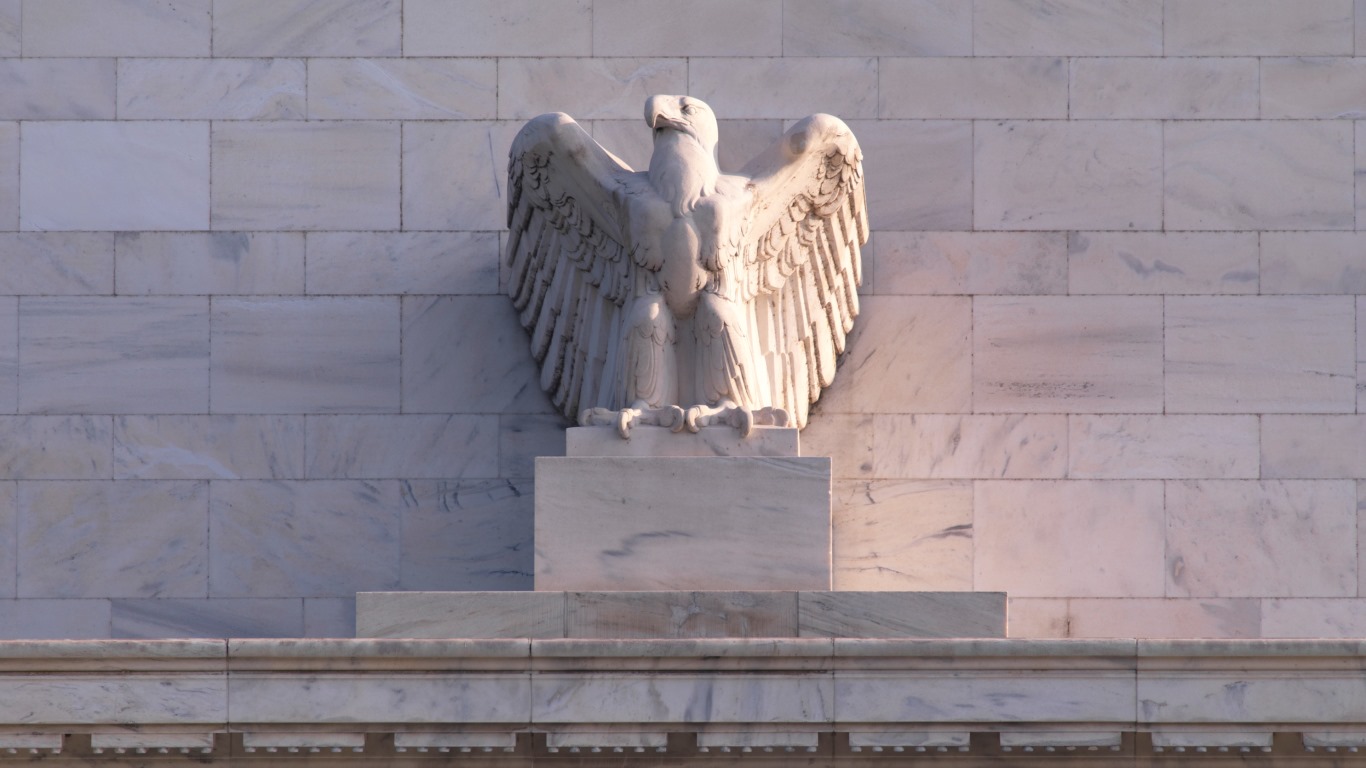Banking, finance, and taxes
Can Record Highs Withstand Year-End Liquidity Demands?

Published:
Last Updated:

Before noon on the day after Christmas, both the S&P 500 index and the Nasdaq Composite index set new intraday highs. The S&P is up nearly 30% for the year to date and the Nasdaq is up more than 35%. The Dow Jones industrial average is doing pretty well, too, up about 22% in 2019. The Financial Select Sector SPDR Fund (NYSEARCA: XLF), with more than $25 billion in assets under management, has improved by more than 31% so far this year.
Financial biggies like JPMorgan Chase & Co. (NYSE: JPM), Goldman Sachs Group Inc. (NYSE: GS) and Bank of America Corp. (NYSE: BAC) are around 40%, 34%, and 42% for the year to date. Everything’s come up roses and lollipops, right?
Not so fast, warned Credit Suisse analyst Zoltan Pozsar in a Global Money Note issued earlier this month. The hiccup in the reserve repurchase (repo) market that forced the Federal Reserve to inject almost $500 billion in cash into the repo market has not been solved, Pozsar says. It has only been papered over with greenbacks.
The Fed’s repo facility, which makes overnight loans out of reserves held by the New York Fed on behalf of certain financial institutions, depends on what Pozsar calls a lender of next-to-last resort, in this case, JPMorgan. The bank’s excess reserves (the largest of any financial institution) become another bank’s required reserves.
By tapering quantitative easing purchases and reducing its balance sheet, the Fed stripped the repo market of its next-to-last resort lender and left the so-called carry market on its own. And, Pozsar says, “If carry makes the world go ’round, and reserves make carry possible, the day we run out of reserves would be the day when the world stops spinning.” That, he says, “is not an overstatement.”
Here’s what happened Pozsar says:
The Fed became lender of last resort to dealers as J.P. Morgan ran out of reserves to lend, and the primary financier of the government as $250 of the $275 billion of the reserves that’s been put into the system since September ended up in Treasury’s general account. Thus, all that the Fed’s liquidity operations have done to date is to ensure that the Treasury’s cash needs don’t drain further liquidity from banks HQLA [high-quality liquid assets] portfolios, but it did not inject excess reserves into the banking system ahead of the year-end turn.
For a variety of technical reasons (read Pozsar’s note in its entirety) there’s no reason to believe the year-end turn will run any more smoothly than the third-quarter turn. The Fed and other central banks need to take over as market makers in foreign exchange swaps and fire up round four of quantitative easing.
A QE4, Pozsar says, “would help through the backdoor … by reversing the mistake of balance sheet taper [and would also mean] buying back from dealers and banks the Treasuries they were forced to buy during balance sheet taper and giving back the reserves they gave up in the process.” Doing so replenishes liquidity in HQLA portfolios and reestablishes JPMorgan as the lender of next-to-last resort in the repo market.
The Federal Reserve Bank of New York added $28.8 billion overnight (repo) liquidity on Thursday and $18 billion in 14-day liquidity extending into the new year. That followed additions of $24.8 billion on Tuesday and $20.55 billion on Monday. The amounts added were considerably lower than what the Fed had on offer.
Thank you for reading! Have some feedback for us?
Contact the 24/7 Wall St. editorial team.